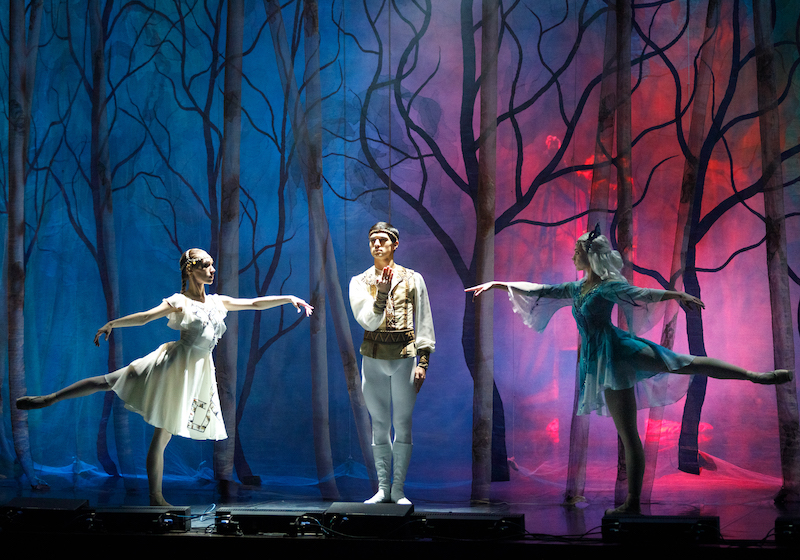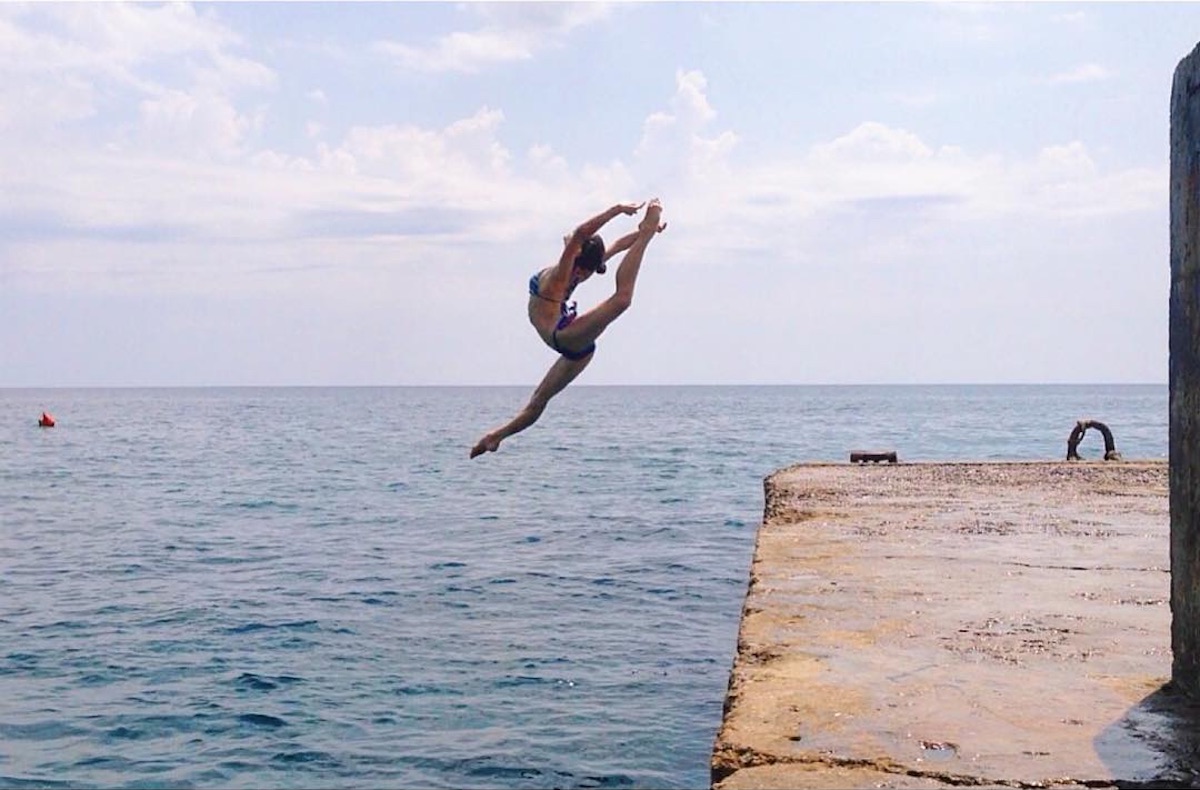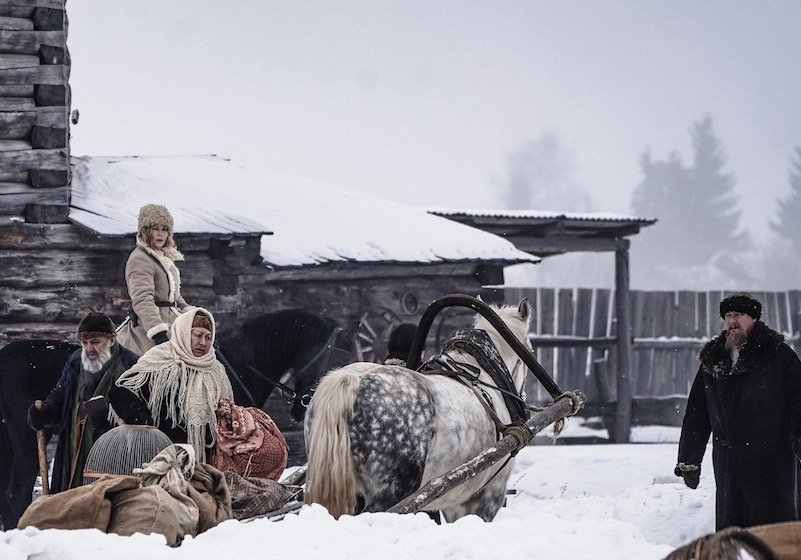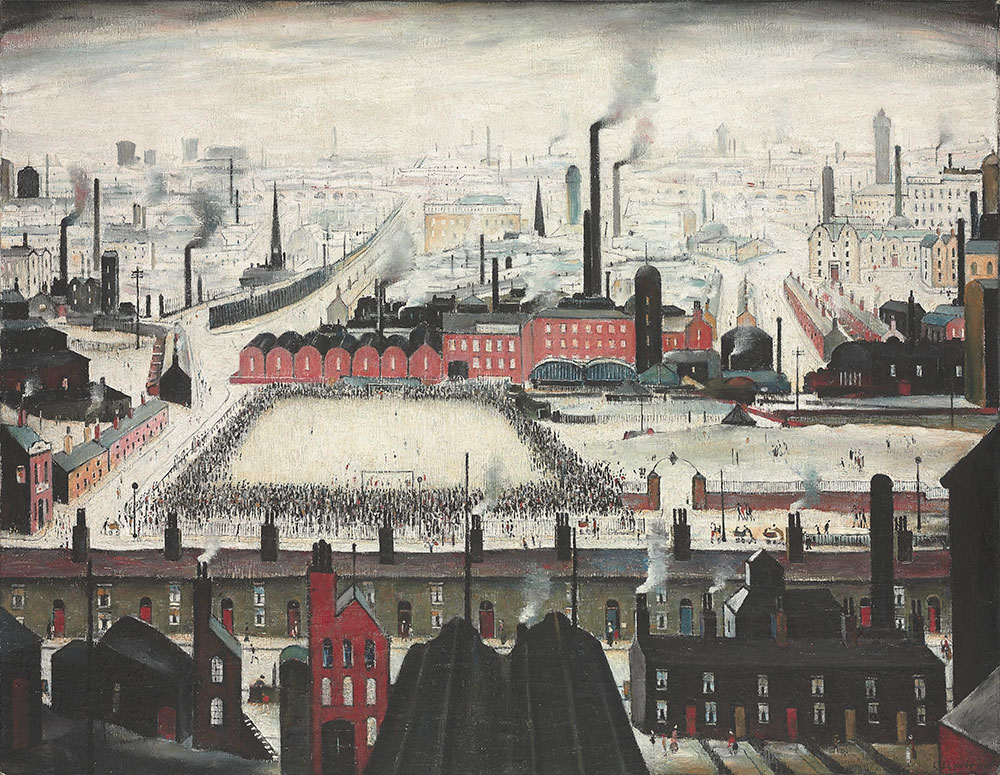How Russia’s indigenous artists reforged Soviet ballet to revive provincial theatre

Shaped by a domineering socialist aesthetic and the economic blows of the 1990s, the arts scene in provincial Mari El has faced many challenges. Local theatres, however, continue to innovate, re-inventing the art scene’s Soviet legacy using the region’s ethnic heritage.
Seated in the new hall of the Sapaev Opera and Ballet Theatre in Yoshkar-Ola, it is easy to forget that you are almost some 400 miles east of Moscow. The theatre is compact but stately, with a magnificent organ that rises towards the ceiling’s ornate chandelier. It conjures scenes of a Russia best kept pressed between the pages of a novel, where Tolstoyan heroines live out their own private dramas from lavish opera boxes.
Look to the stage, however, and that familiar feeling is interrupted. The boards are bare but for a translucent curtain. A group of ballerinas, dressed in simple white tunics, enter the stage. Their movements seem odd: slow and smooth, as though they are wading through water or parting the branches of trees. Newcomers may be at a loss, but local audiences will recognise the movements at once. This is part of the traditional dance of the Mari, the region’s indigenous nation. Its sudden intrusion into an otherwise classical production is no coincidence. It is part of an experiment that seeks to tackle the some of the most crucial challenges facing the post-Soviet provincial stage: how to use Soviet traditions to create art for a new Russia, while still standing on par with global artistic developments.
Forest Legend on stage. Image: Evgeny Nikiforov, Erik Sapaev Mari Theatre of Opera and Ballet
In the past few decades, creative exploration in Eastern Europe has centred on rejecting Soviet clichés. The Soviet vision of artistic excellence has left a burdensome legacy, with the Revolution’s artistic avant-garde soon giving way to the return of classical high art. By the 1930s, the country state began reigning in bold experimentation, embarking instead to mould the arts into a suitably Soviet forms. Conservative, rigid, and tending towards classicism, the Socialist Realist aesthetic shaped literature, visual arts, and, even ballet, creating a climate that was more conducive to technical achievement than innovation. The aesthetically and politically complex work of choreographers like Leonid Yakobson was an exception that proved the rule: experimentation was difficult, requiring compromise and resources.
Regional artists lacked neither creativity or ambition, but local theatres remained mired in mundane yet potentially fatal problems
From the moment that socialism fell, creatives had more freedom to shake off these old aesthetic restrictions in favour of more innovation, more vision, and fewer boundaries. Some institutions, however, rebounded quicker than others. Experimentation requires resources and audiences. Art spaces in Moscow and St Petersburg began to bounce back faster than their provincial counterparts. Regional artists lacked neither creativity or ambition, but local theatres remained mired in mundane yet potentially fatal problems: limited resources, shrinking audiences, youth migration to big cities — the fallout of the struggle for survival in the 90s. Even today, the experimental productions remain concentrated in larger capitals. In smaller cities, Soviet norms remain influential because of both inertia and the high costs of experimentation — theatregoers, many of them of the older generation, expect traditional productions. Ultimately, many peripheral theatres simply cannot afford to immediately reject the legacy of Soviet-style classicism once and for all.
This is particularly true in the country’s non-Russian provinces. There, Soviet aesthetic conventions had an even stronger impact. In many cases, Soviet-styled artforms often arrived hand in hand with the emancipation of ethnic minorities during the Revolution. The Mari El Republic is one such place: a small territory in the Middle Volga, with a sluggish economy and few opportunities for large-scale cultural innovation. Alongside local Russians and Tatars — as well as small but visible migrant populations from the Caucasus, Central and South Asia — the republic is home to the eponymous Mari people. This indigenous group has a vibrant and distinctive culture, and a Finno-Ugric language with two dialects, Hill Mari and Meadow Mari. Today the Mari are a minority in number, if not in name: unlike smaller ethnic groups living in Siberia, the Mari are regarded in Russia as a distinct “nationality.”
People walk in Yoshkar-Ola, capital of the Mari-El Republic. Image: Anna Alyokhina
In Mari El, as in other ethnic republics, the Soviet state has defined a century’s worth of art. Here, cultural modernisation was accompanied by Sovietisation. State institutions used and to a certain extent encouraged Mari art in a way that the Russian Empire had not, allowing for many important firsts, including the first Mari novels, operas, and ballets. But this cultural visibility came at the price of artistic innovation. Mari art was expected to be “national in form, socialist in origin,” which led to moralistic prose, repetitive plots, and predictable techniques. The radical aspects of Soviet artistic life, either the avant-garde or the underground, did not generally make it to the provinces. Throughout the 20th century, Mari theatre had to develop within by the Soviet mainstream.
But in 1991, Soviet funding for arts vanished, along with the state that dispensed it. For artists everywhere, these political changes brought both new horizons and new challenges. In ethnic republics, many turned from socialist themes towards questions of identity, as well as pre-Soviet and even pre-Christian histories. The Mari community became a major driving force of Finno-Ugric cultural resurgence at the time. Welcoming artists from Eastern Europe and Siberia, the Republic emerged as a vibrant centre for ethno-futurism, a movement that inspired visual artists and playwrights alike to reinterpret Mari mythology in a more contemporary way.
Many other Mari productions, however, stuck to the well-trod path carved by Soviet theatre: comedies set in rural settings or adaptations of Gorky and Shakespeare. Struggling both for funding, and to keep audiences on board, the strand of Mari culture that once took to the province’s large stages had lost its former forward momentum — something that new movements such as ethnofuturism could not salvage alone. Breaking free required a new kind of thinking: one which could harness the best of the region’s Soviet legacy to, while leaving create enough room for artistic innovation. When an answer finally did appear, it came from one of the region’s most renowned Soviet-era institutions: a retelling of the Mari people’s first ballet.
The riverside of Yoshkar-Ola, capital of the Mari-El Republic. Image: Alexxx1979/Wikimedia Commons under a CC licence.
Founded in 1968, the Erik Sapaev Theatre of Opera and Ballet is a cultural bulwark in Mari-El. The troupe’s technical excellence is celebrated within and beyond Russia, including the UK, largely due to the creative and administrative direction of former Bolshoi Theatre soloist Konstantin Ivanov. Ivanov, himself a ballet prodigy who grew up in a rural, single-parent Mari household, returned to the Republic in the early 2000s, at the height of his career, to found a dance school. He also pushed the theatre to premiere an updated version of the first Mari ballet, Anatoli Luppov’s The Forest Legend (or Chodra Sem, in Mari) from 1973. Luppov’s score interprets traditional Mari tunes to create support a libretto with the predictable components of a classical ballet. It follows two young people, Erika and Aksai, whose love is threatened by an the evil wizard Keremet. With his eyes on the beautiful Erika, Keremet replaces her with a malevolent double called Shaivi, a woman he has enchanted and enslaved. The strength of the couple’s love — and, more practically, Shaivi’s lack of commitment to Keremet’s schemes — ensure a happy ending. At the libretto’s turning point, Shaivi releases Aksai, who is then free to fight Keremet and liberate his beloved.
The two previous versions of the ballet, Enn Raja’s in 1973 and Olga Komleva’s in 1993, were stymied by a lack of dancers, especially male ones, and by limited finances (Luppov’s forest maidens had to dance in tunics made of medical gauze). Despite these challenges, both productions are fondly remembered by older audiences as authentic representations of Mari culture. Ivanov, however, found the 1993 Forest Legend disappointing.
The two previous versions of the ballet were stymied by a lack of dancers and limited finances. Luppov’s forest maidens had to dance in tunics made of medical gauze
When I speak to Ivanov, he meets me in the office where he has served as Mari-El’s Minister of Culture since 2017, decorated with Mari art and photographs of local landmarks. Now in his forties, Ivanov is impressively tall and retains a dancer’s posture; once we begin discussing the ballet, he grows animated, moving his hands to demonstrate elements of the choreography. Initially, he agrees to talk for 15 minutes. We end up speaking for almost an hour.
Twenty-seven years ago, Ivanov had been excited about the ballet, but upon seeing it, could not help recognising that it lacked structure: “To my mind, it was a completely formless production,” he recalls. When he later took up the position of artistic director at the Erik Sapaev Theatre, Ivanov removed The Forest Legend from the repertoire along with several other productions, focusing instead on rebuilding classic ballets such as The Nutcracker and Swan Lake from the ground up. But the question of the first Mari ballet appeared time and again, both in interactions with the press, and with members of the public. Ivanov knew that the old production was not viable, but he also believed that the ballet was special. “It’s the first Mari ballet,” he reiterates, “and we have only had three. Of those, it was also the only ballet that was preserved, and that fact alone says a lot.” One day, after a particularly heated conversation with the media, Ivanov went back to the theatre and asked to see Luppov’s score. He loved it: “it has absolutely incredible passages, adagios that are just fantastic, beautiful themes.” He decided it was time to bring the ballet back.
Forest Legend on stage. Image: Evgeny Nikiforov, Erik Sapaev Mari Theatre of Opera and Ballet
But while revisiting Luppov’s score together with composer Ivan Yegorov, Ivanov realised what his predecessors’ greatest challenge had been: there simply was not enough music to create the production they wanted. The two decided to expand the score by splicing it together with Luppov’s other ballets: The Interrupted Feastand The Castle of Sheremet. The experiment worked seamlessly, and, after Ivanov sheepishly confessed their musical “hooliganism” to Luppov, even received the composer’s blessing. The score was completed on the day before the premiere. Choreographer Alexander Zverev, who collaborated with Ivanov on the production, arranged one of Luppov’s themes for the synthesiser. The electronic sound worked perfectly for the effect Ivanov was after: a story told “from such a distant past, almost as though it’s being told from space.”
To achieve the desired magical feel, Ivanov also rejected predictable sets of painted birches and brooks. “I absolutely did not want to stage the production in a banal way: ‘here you’ve got the birch, here you’ve got the river, here’s the sky, here’s the earth…’ I was not interested in that at all. I realized that in order to work with this music, the staging needs to be completely different. It must be completely extraordinary. It can’t be prosaic,” he says. The new set, developed by Boris Golodnitsky, is appropriately striking. The space of the stage is carved into three domes: the largest represents the birch grove; the middle one, the mysterious forest; and the third and smallest, the underworld. Ivanov’s choreography has similar clarity: fearing that a direct re-enactment of Mari rituals would look too literal, he stripped everything down to tell the story in laconic movements.
The rejection of past norms is a well-established artistic route to modernise a tired genre. Ivanov and Zverev’s The Forest Legend, however, is notable because it does not follow that path. It does not contest Soviet aesthetic canons or traditional themes of good against evil. Instead, it reinvigorates and develops the possibilities inherent in the classical forms that were expected from Soviet choreographers. They are used to explore questions about human relationships that are profound but also highly topical: in human society and in personal relationships, what does it mean to consent or submit, to control and be controlled? More broadly, what does it look like to relate to others and to act independently?
For those who had seen the original staging, Ivanov and Zverev’s production, with its abstract set design and a choreography that reinterprets, rather than replicates, folk dance, seemed revolutionary. When the new production premiered in the Sapaev theatre in 2005, tickets sold out immediately. Fifteen years later, the show continues to fill the theatre to capacity.
Forest Legend on stage. Image: Evgeny Nikiforov, Erik Sapaev Mari Theatre of Opera and Ballet
But even if innovations in the production were rather mild, the road to acceptance was not without its difficulties. In the months after the 2005 premiere, audience members would challenge Ivanov during press events, lamenting the lost soulfulness and ethnographic detail of the old versions.
Although folk elements are toned down in The Forest Legend, a Mari spirit permeates the new production, communicated in the language of academic dance. The forest maidens’ striking gestures, which suggest swimming or parting tree branches, are borrowed directly from Mari tradition. (Incidentally, they were the only element left unchanged from the original 1973 production.) Aksai’s final solo is another example of Mari culture shaping the choreography. Like Tchaikovsky’s Prince Siegfried and other ballet protagonists before him, the victorious hero returns home from a transformative adventure. “But this is no Swan Lake,” explains Ivanov. “This is not a European story about a medieval duke. This is a story of the Mari people, about the nature of the Mari people, about the spirit of the Mari people.” The triumphant Aksai rushes not into the arms of his beloved but into the space of the kyusoto, the sacred grove. His dance is not about romance; it is a “monologue of admiration and adoration for the world. An anthem of love for one’s native land.”
The constant of Mari heritage which appears in both adaptations of The Forest Legend has helped to bridge the old and the new — perhaps most obviously by the pride it inspires in local audiences. The Sapaev troupe is multi-ethnic, as is almost always the case in Russia, and the ballet’s themes and techniques have universal appeal. But for ballerinas such as Svetlana Sergeeva, an ethnic Mari, the choreography has another layer of significance: “I loved the Mari music and these movements. I myself am Mari, and when I hear Mari music, my body starts to move. My feet start dancing, and my hands, with these gestures, they move on their own. When I danced that part, I was in heaven.” As a fellow Mari woman seated in the audience, I shared her excitement: each detail was unmissable and profoundly moving.
The new Forest Legendis not revolutionary. Instead, what it achieves is an almost impossible act of synthesis: bridging the half-imagined distant past of Mari legends, the circumscribed empowerment of Soviet stage arts, and post-Soviet experimentation. Because it uses the language of Russian classical ballet, the new Forest Legenddraws in crowds of viewers who may not risk venturing into more experimental productions. Sergeeva believes that even people used to “the pure classics – Giselle, Swan Lake– will come see The Forest Legend. Even if at first it’s just curiosity: to see what this ballet is about. They will come and have different feelings after the show.” Divergence of opinion, in provincial and metropolitan theatres alike, is an advantage. Controversy and debate are key to a thriving artistic scene.
But perhaps the key to the ballet’s significance is that it is not solely for Mari audiences. The lessons it embodies can be taken elsewhere, to prove that provincial art can adopt and subvert global genres, excel at them and develop them, without the need for big budgets or the heady challenges of starting from scratch. Artists do not need to be based in Moscow or St Petersburg, or throw away the rule book to raise profound questions of being – and of art.
For Ivanov, combining a deeply-rooted sense of place with artistic exploration has been a rare honour. The Forest Legend is about “love for [your] native land,” he says, “and generally for everything that happens here.”


